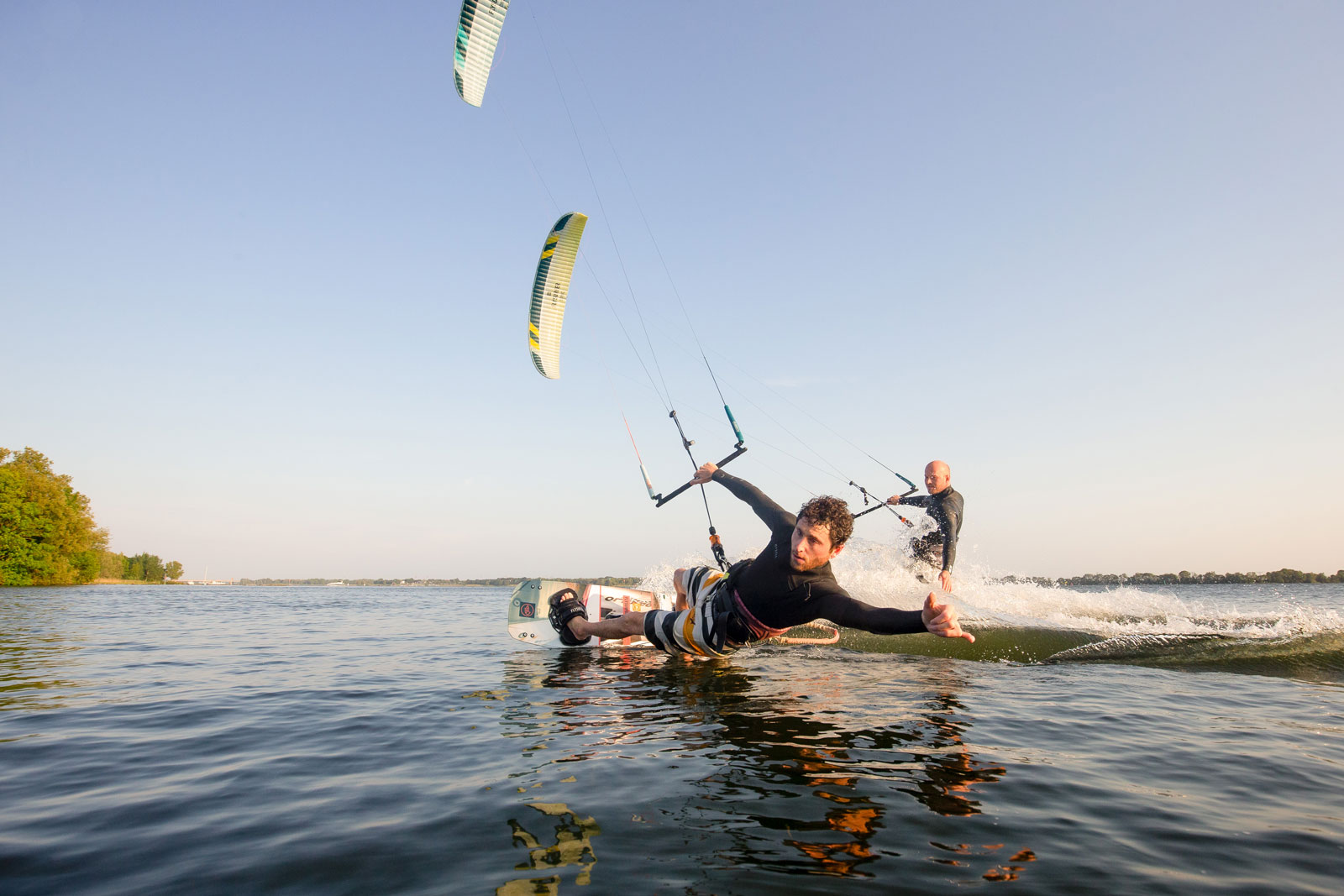In this post, you’ll find out who the kite is suitable for and what added value it can offer you, when it’s a good time to switch from SOUL to SONIC, and the challenges of switching from a tube kite to the SONIC.
Who is the kite designed for and what value does it offer to me?
The SONIC is designed for someone who already has a basic understanding of tube or foil kites. You should be familiar with launching, landing, relaunching, and self-rescue techniques. Additionally, you should be able to maintain course and have basic jumping skills. It is primarily intended for advanced riders seeking a kite that covers a wide wind range and provides exceptional jumping performance and hangtime. From the lightest breeze, the kite generates a solid power delivery that is effortless to control. The significantly improved handling of the kite opens up new possibilities for big air kiters, freeriders, fun racers, and foil freestylers. Whether on water, land, or snow, it does it all.
The value for big air kiters:
The efficiency of the SONIC allows you to practice modern kite loop variations and technical board-offs even in moderate wind conditions. The lift, hangtime, and upwind performance enable you to achieve more high jumps during your session, spend more time in the air, and waste less time going upwind. In strong winds, the sizes 8/6 offer limitless possibilities for single loops, contra loops, or attempts at height records.
The value for freeriders:
Trust in an outstanding package of power delivery, depower, stability, and control. Enjoy incredible riding pleasure and be amazed by the high riding speed. Precisely control the SONIC4 according to your preferences with personalized bar forces. Glide effortlessly against the wind as every gust is efficiently converted into power while you relax in your harness. With just two kites, comfortably cover the wind range for freeriding in your holiday destination and travel light with minimal weight and cost.
The value for fun racers:
The control and easily accessible power of the SONIC in the lowest wind range are breathtaking. The significantly improved relaunch and stability make it accessible even for those transitioning from tube kites. The superb depower provides you with security as the kite reduces its power very precisely and efficiently through the control bar. Its performance is comparable to Formula Race Kites. The sizes 18 and 15 are particularly tailored for foiling, and you will notice the reduced weight compared to the previous model.

When should I switch from SOUL to SONIC?
Simply said, if you’re looking for a more agile and high-performance kite, the SONIC is the way to go. The handling of our high-performance kite is significantly improved, allowing for a seamless transition. We especially recommend a switch for SPEED and SOUL1 owners. The SONIC is lighter, sits further forward in the wind window, has thinner profiles, and reacts faster. The advantages are clear: a larger wind range, excellent top-end control, improved acceleration, and peak performance.
The SOUL, on the other hand, remains incredibly user-friendly and robust, with great durability. This all-rounder generates more pulling power at the harness hook and is easier to launch and relaunch. It generates higher steering and holding forces, giving the rider a sense of security. Both kites are highly versatile and can handle demanding conditions with ease.

What is the challenge when switching from a tube kite to the SONIC4?
Construction:
Setting up the kite, sorting the lines and mixer, attaching the control bar, positioning the kite before launch.
Launching:
The Ram Air Kite doesn’t require a pump and is filled by the wind. Prior to launching, you should pre-inflate the kite. Control with a Foil Kite is slightly delayed as the kite needs to be fully inflated. The SONIC is slightly more demanding to launch compared to the SOUL, and the SOUL is slightly more demanding than the HYBRID.
Relaunch:
Both control lines are used for a reverse launch. A Ram Air Kite can potentially catch water, making relaunching more challenging.
Landing:
For a Foil Kite, it’s crucial to have an assistant who knows the proper technique. The assistant must immediately pull the kite upwind and press it onto the ground while applying weight.
Self-rescue:
Correctly rolling up a Soft Kite requires practice. It’s important to avoid entangling the lines on the bridle and prevent excessive water from entering the kite through the air intakes. When done correctly, a Foil Kite can be packed into a more compact package compared to a Tube Kite.

We hope to have helped you in your decision to switch – or in your first contact with our BigAir kite.




